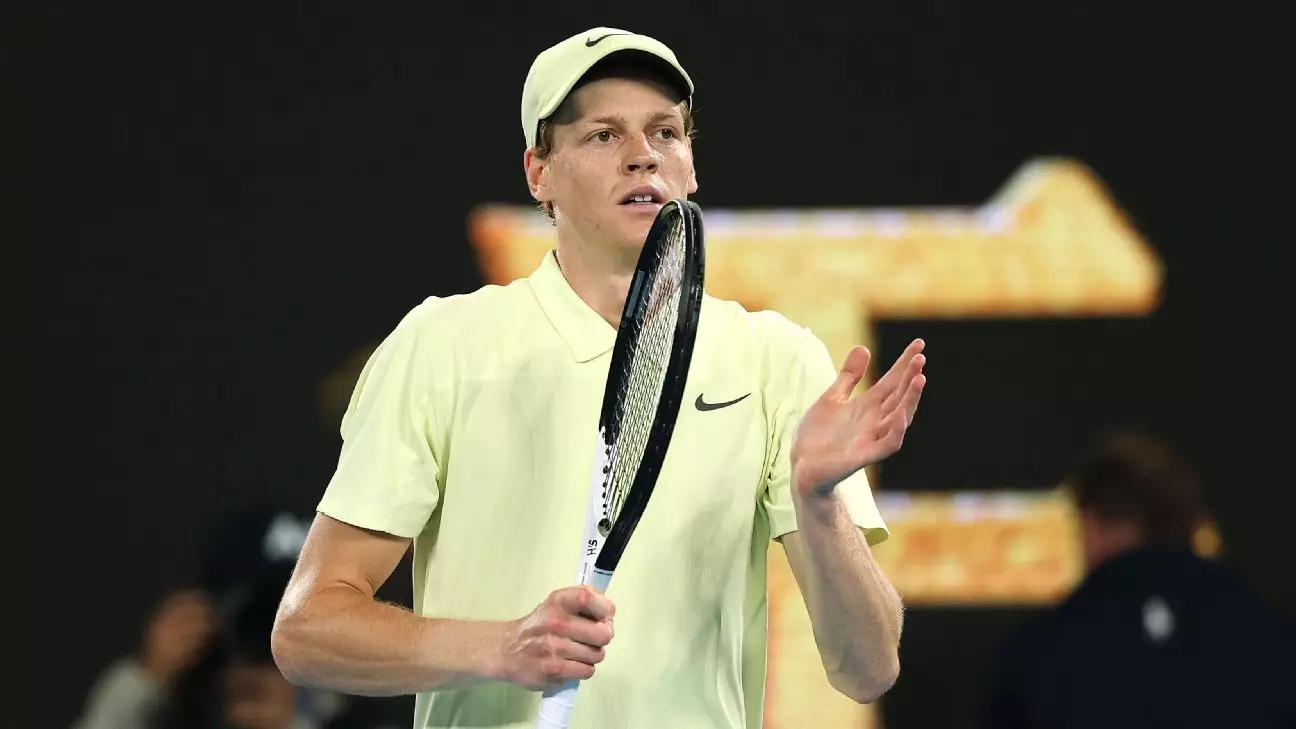In a significant turn of events, Jannik Sinner, currently embroiled in a three-month suspension due to doping violations, has been replaced in the upcoming exhibition event in Las Vegas. The MGM Rewards Slam, scheduled for March 2 at the Mandalay Bay Resort and Casino, will now feature Casper Ruud alongside prominent players like Alexander Zverev, Taylor Fritz, and Tommy Paul. This last-minute change underscores not only the implications of Sinner’s ban but also how quickly the dynamics in the tennis world can shift.
The circumstances surrounding Sinner’s suspension are complex and somewhat unfortunate. As a talented athlete on the rise, his acceptance of a three-month ban following a settlement with the World Anti-Doping Agency (WADA) brings to light serious issues of athlete responsibility and the stringent regulations governing sports. Sinner was banned after testing positive for trace amounts of clostebol, an anabolic steroid, twice in March 2024. He attributed these results to a contaminated cream used by a staff member, underlining the potential pitfalls that can ensnare even the most diligent athletes.
The International Tennis Integrity Agency had previously exonerated Sinner, highlighting the accidental nature of the contamination; however, WADA’s appeal highlighted the necessity for stricter measures and accountability. This situation emphasizes the high stakes involved in professional sports and how an athlete’s career can pivot dramatically due to unforeseen circumstances.
This suspension arrives at a time when Sinner has been making significant strides in his career. Despite this setback, his absence from the court during this period will not result in missed opportunities in major Grand Slam tournaments, as his ban concludes before the French Open begins on May 25. The timing of these events raises eyebrows and adds layers to discussions on fairness and the efficacy of current doping regulations within tennis.
In contrast, players such as Ruud, Zverev, and Fritz will have a chance to capitalize on Sinner’s absence. Ruud himself has a history of high-level competition, having been a runner-up in Grand Slam events, and will now find a likely pathway to solidify his standing without having to compete against Sinner. For Fritz, who faced Sinner in the intense final of the previous US Open, this presents a critical opportunity to claim a greater role in the elite echelon of men’s tennis.
As the tennis calendar continues, all eyes will be on Sinner and his eventual return to competitive play. The Rome Masters, occurring in early May, will be his first chance to demonstrate his readiness and resilience following this tumultuous period. Meanwhile, other players are poised to seize the moment, highlighting the constantly evolving narrative within sports where fortunes can change rapidly.
In tandem, the upcoming exhibition match featuring top-ranked Aryna Sabalenka against former No. 1 Naomi Osaka draws further attention to the broader landscape of tennis—a sport where both triumphs and tribulations define the paths of its athletes. As Sinner faces the fallout of his situation, tennis enthusiasts eagerly await what the future holds for all involved.

